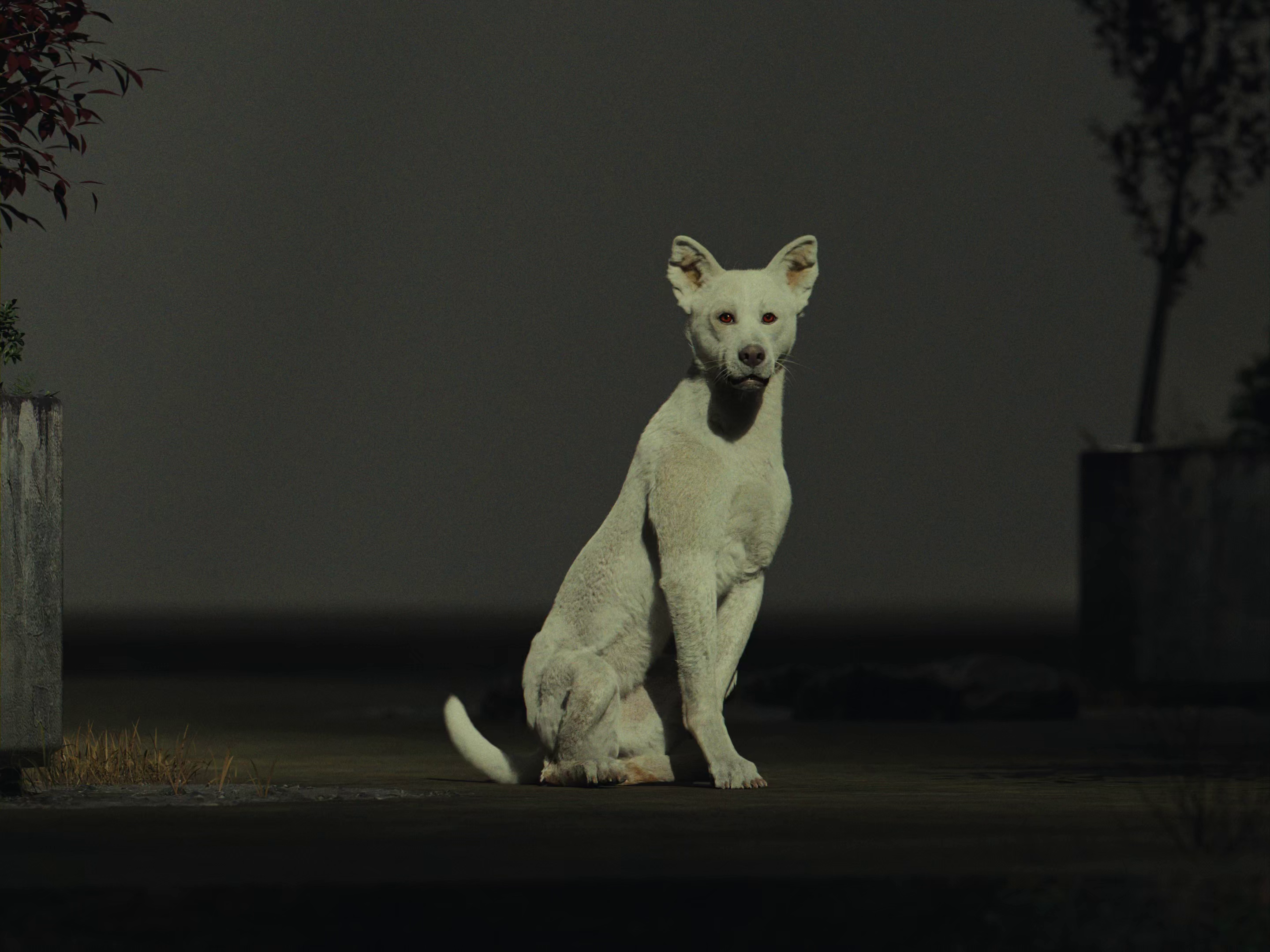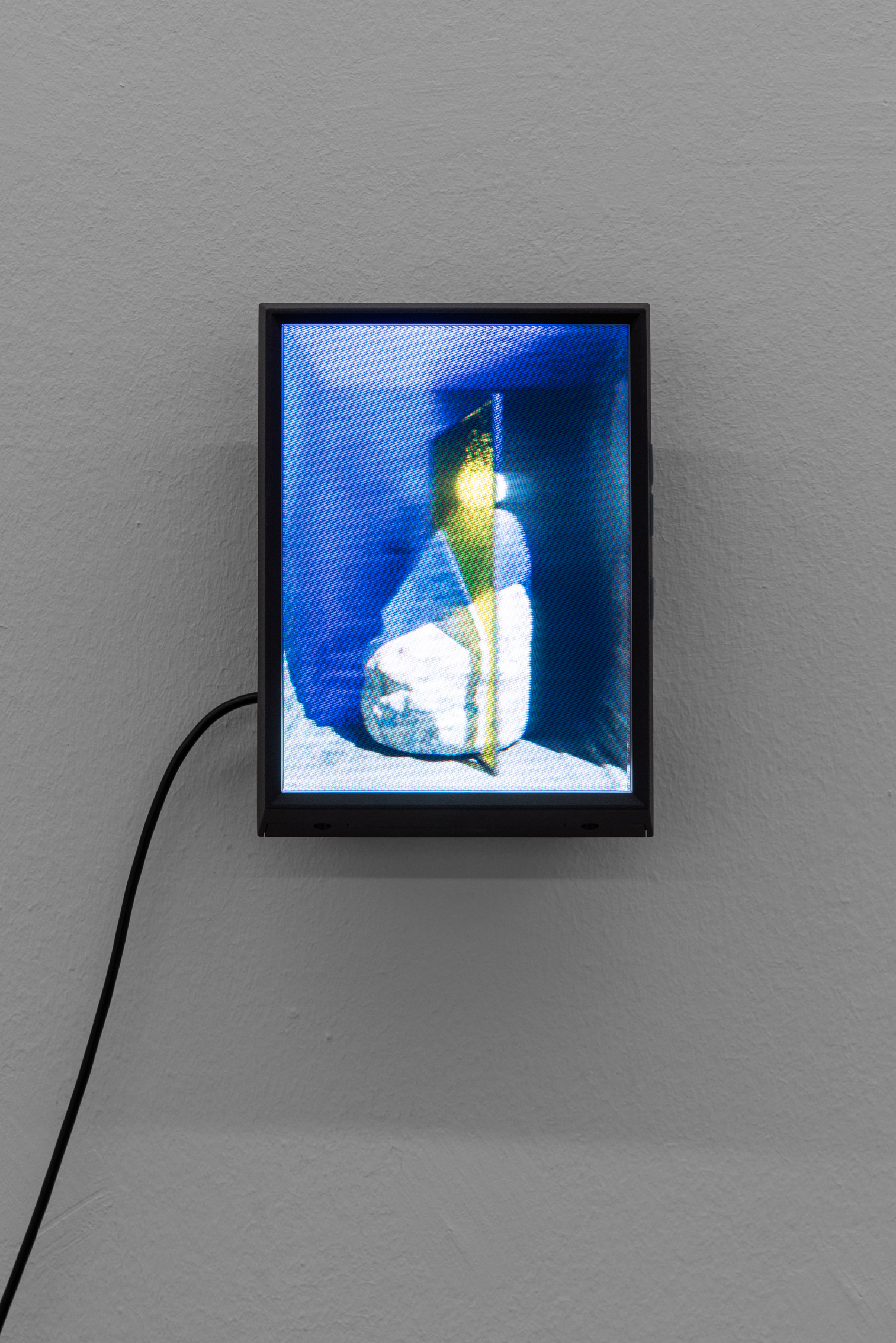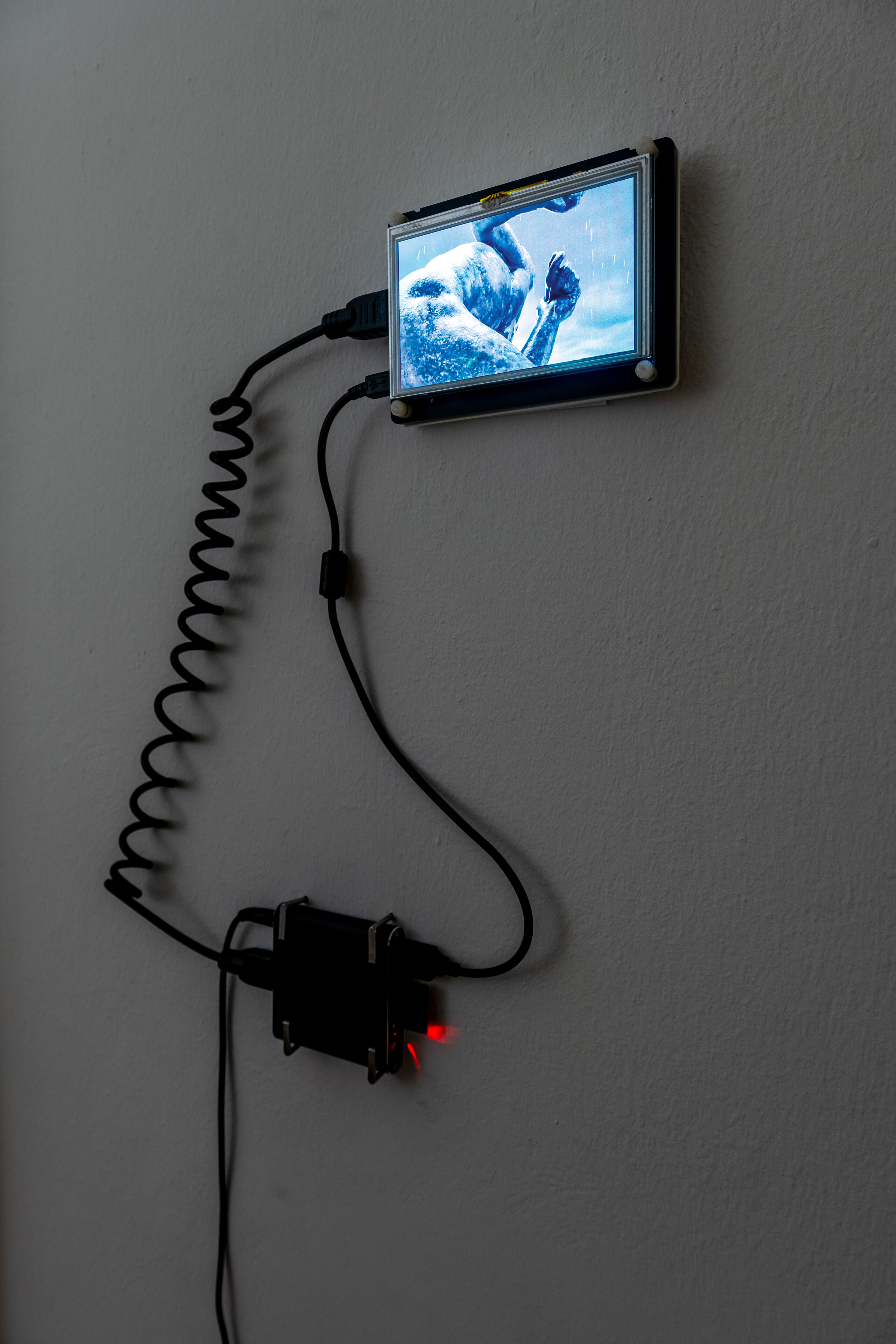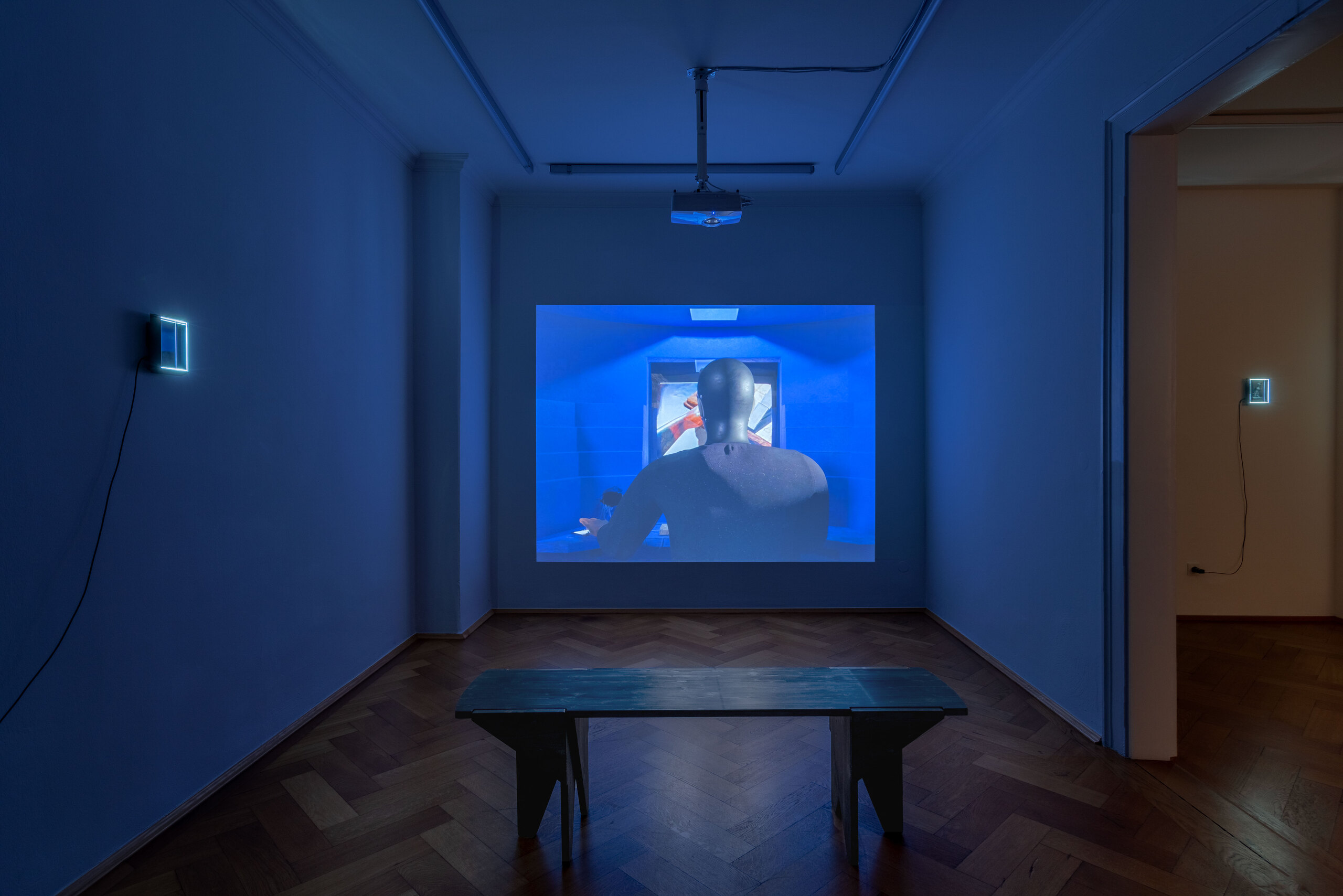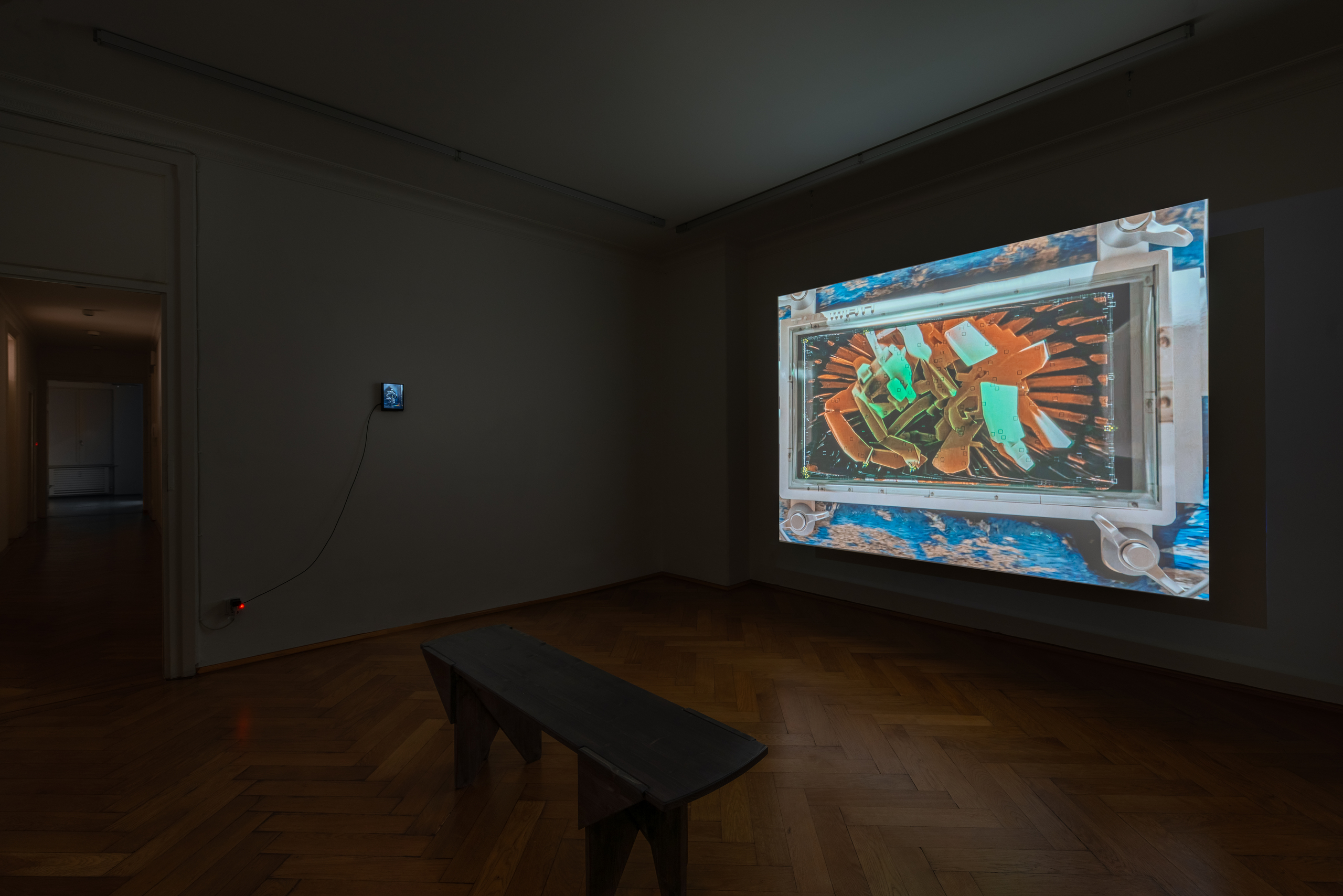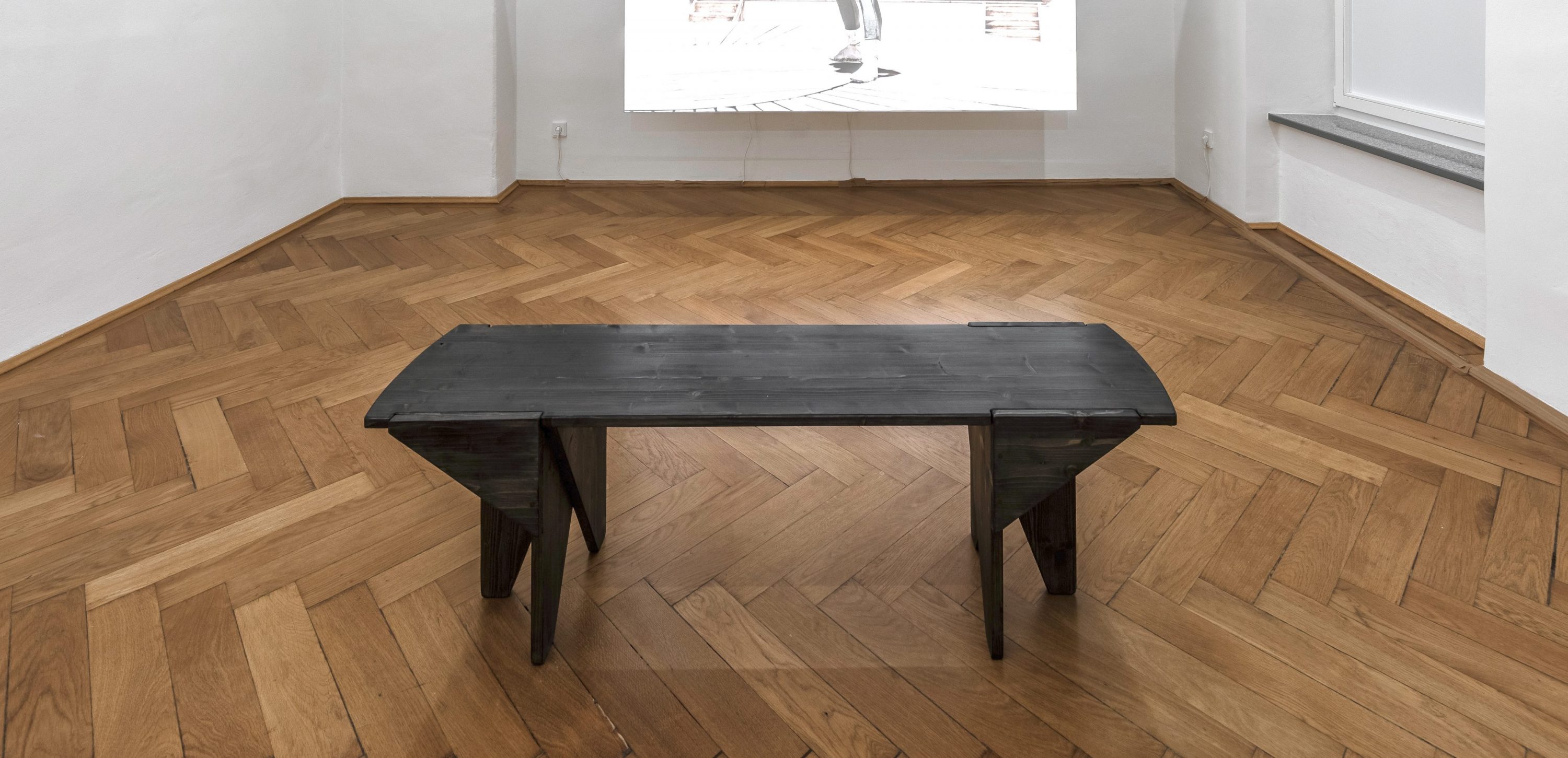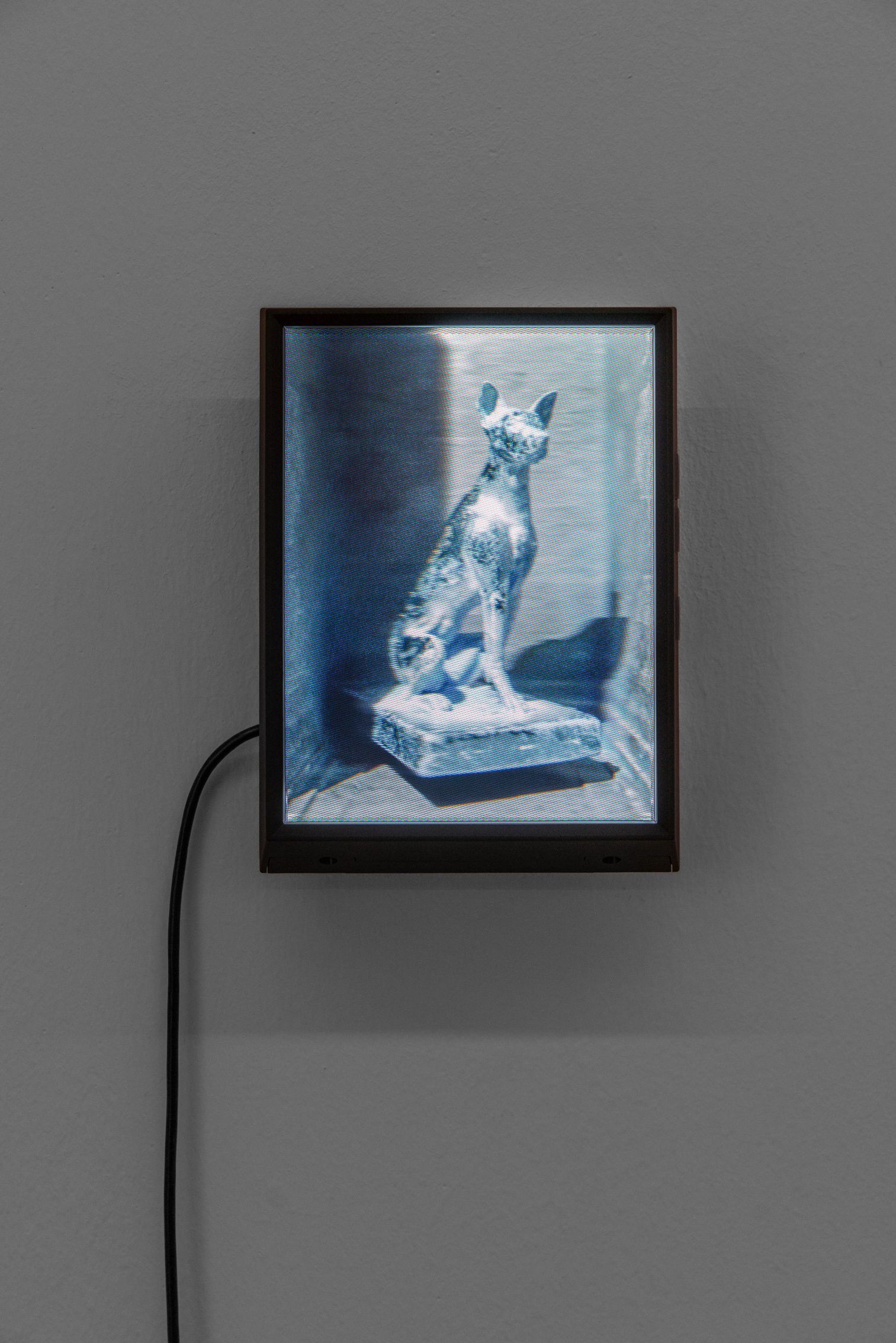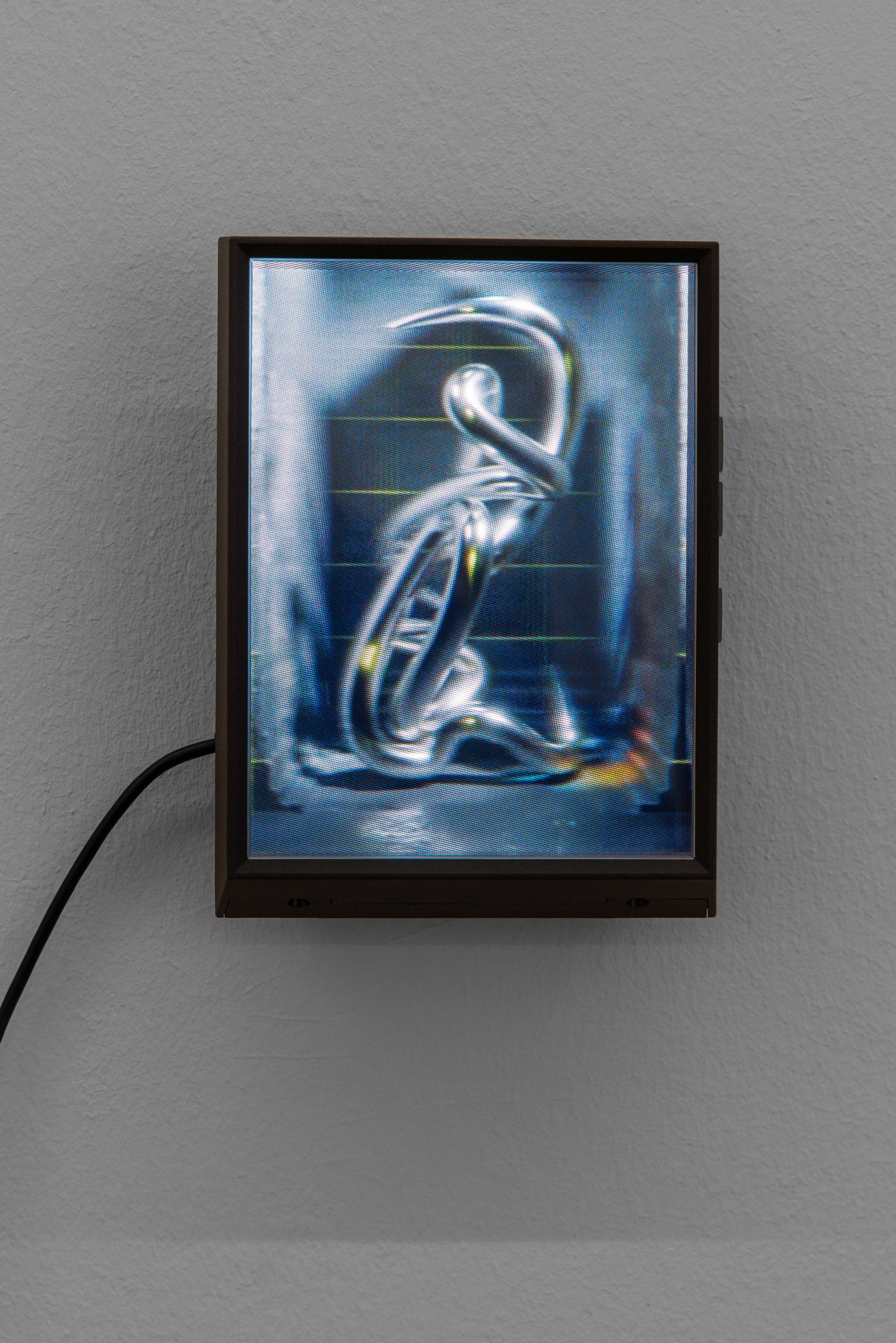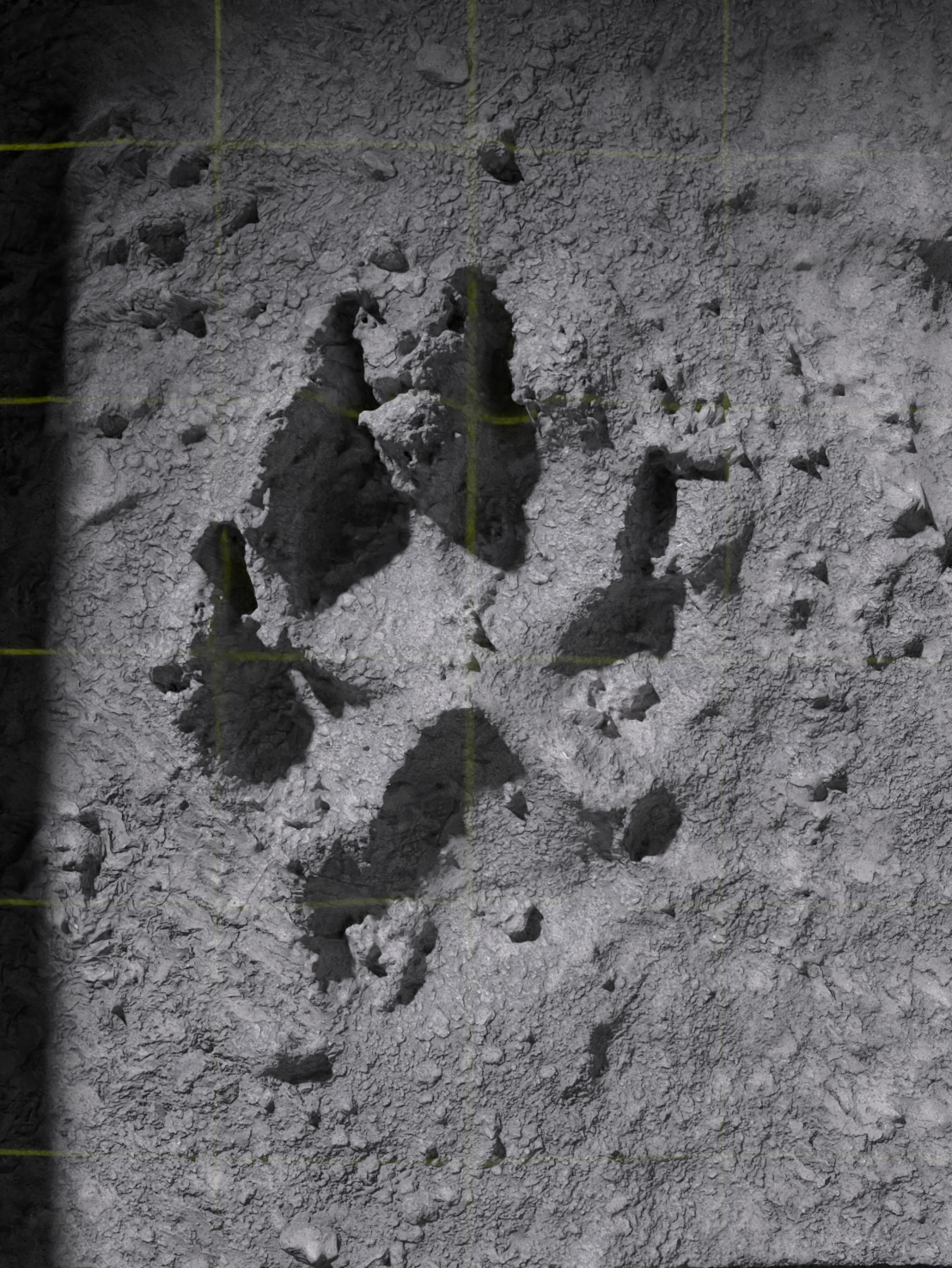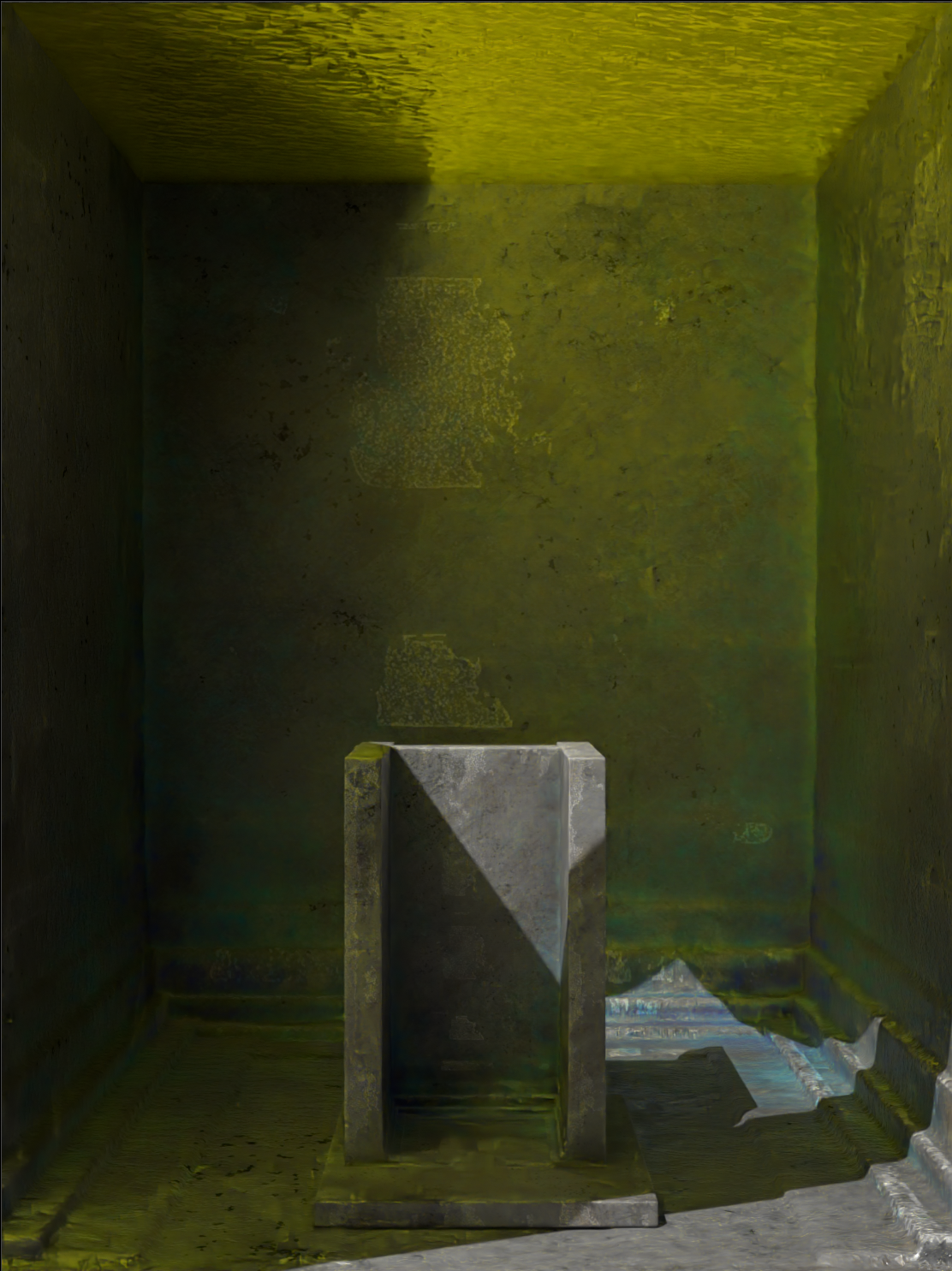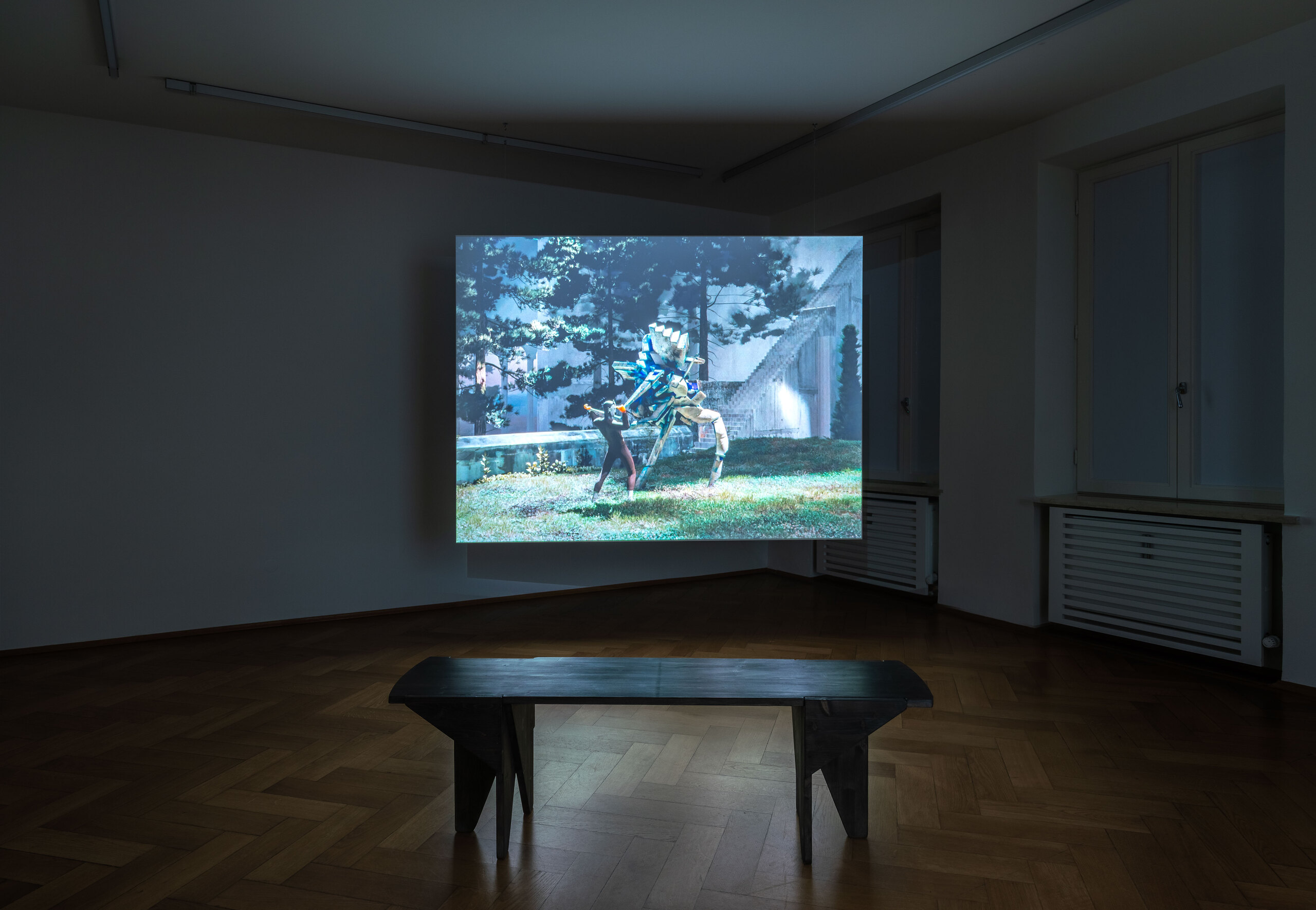
Strange and uncomfortable, yet with a peculiar familiarity, the sounds and images of Paul Valentin’s new work “Tacit Call” permeate the gallery rooms. In each of the three rooms, a black wooden bench stands in front of a synchronized projection of a ten-minute film running in parallel and following no chronology. The camera follows one of three figures, neither human nor robots, as they explore a remote area, albeit one that is by no means desolate or dreary. The various scenes – both in video and physical space — repeatedly overlap, encouraging viewers to explore an unknown yet familiar world.
The composition, mysterious, atmospheric music merging the various sound bits of the films into a whole, was created in close collaboration with musicologist Jan Kuswari, who designed the sound of the film in earlier projects such as “A Piano Plays In Another Room and It’s Raining” (2022). As he did in previous works, Paul Valentin skillfully subverts the work, viewer, and origin by blurring the boundaries between the different spaces and repeatedly crossing or imitating the film’s storylines. One example is the 3-minute video playing on a small 3.5-inch monitor in the gallery hallway, fragments of which also appear in the “Tacit Call” films. However, the original source of these images remains ambiguous. Are they created by the three characters or merely received?
“Tacit Call” follows the protagonists through dream-like sequences that appear and disappear like visions remotely reminiscent of events in the world but always remain intangible and vague. According to the artist, the work is science fiction, yet the images do not depict cutting-edge technology but rather an ancient, enigmatic world. The artist draws from a wealth of references and inspirations to conceive these images. Some scenes are reminiscent of New Objectivity paintings in their sober lighting and precise lines and colors or of old photographs of works of art and archaeological finds, while other segments appear futuristic and alien. The camera angles and editing are skillfully played with, interweaving short, detailed views with decelerating excerpts in which the focus is on the movements of the figures. The work is part of an extensive science fiction universe created by the artist, which is constantly growing and characterizes the aesthetics and content of his work. With “Tacit Call,” he offers an insight into a world that is only just beginning to unfold.
The attention to detail applied to Paul Valentin’s craft is omnipresent in his work. For his films, he uses computer animation (CGI), in this case, working with motion capture to record the characters’ movements. He developed the complex design of the characters, right down to the drapery of their clothes, together with character designer Alexander Degner. The characters wear masks and costumes that contain cultural references. Their heads resemble bi-neural microphones with anatomically correct ears, and they wear faded robes. However, the figures’ hands are particularly striking. These are modeled on the hands of crash test dummies, which have no great use for hands. On the other hand, they become a symbol of sensing and intuitively experiencing a new environment.
In “Tacit Call,” questions are raised that run through the entire work and penetrate its various levels in search of answers. What remains is the feeling of having to take a closer look. The title itself is reminiscent of the term “Tacit Agreement,” which refers to an implied agreement between different parties. It is this unspoken and unknown, yet conscious, that is closely linked to the concept of intuition for the artist. Could the title “Tacit Call” itself translate the term intuition from a language unknown to us?
This interest in concepts and questions from philosophy runs through Paul Valentin’s oeuvre. Here is the centuries-old problem of identifying the first reason and cause in a seemingly causally determined world. Looking back on this tradition, the philosopher Hans Albert recently coined the term “Münchhausen’s trilemma,” named after Baron Münchhausen, who pulls himself out of the swamp with his own hair. Three unsatisfactory possibilities are identified: Either it leads to an infinite regress, where the questioning can never end; to circular reasoning, where the reasoning repeats itself; or to a dogmatic abort, where an arbitrary reason is given for the first event.
In “Tacit Call,” the paradox is not resolved but rather called upon to endure the impossibility and uncertainty and to immerse oneself in the infinite regress. This eternal repetition is expressed in different ways in the figures in the exhibition. ILZ (infinite regress) stands before a monitor or mirror, leading to infinite reflections. INN (circular reasoning) dances around an empty center, and DANUBE (dogmatic intervention) enters an unequal struggle. Viewers are invited to rely on their intuition and, like the figures, explore the cosmos of “Tacit Call.”

